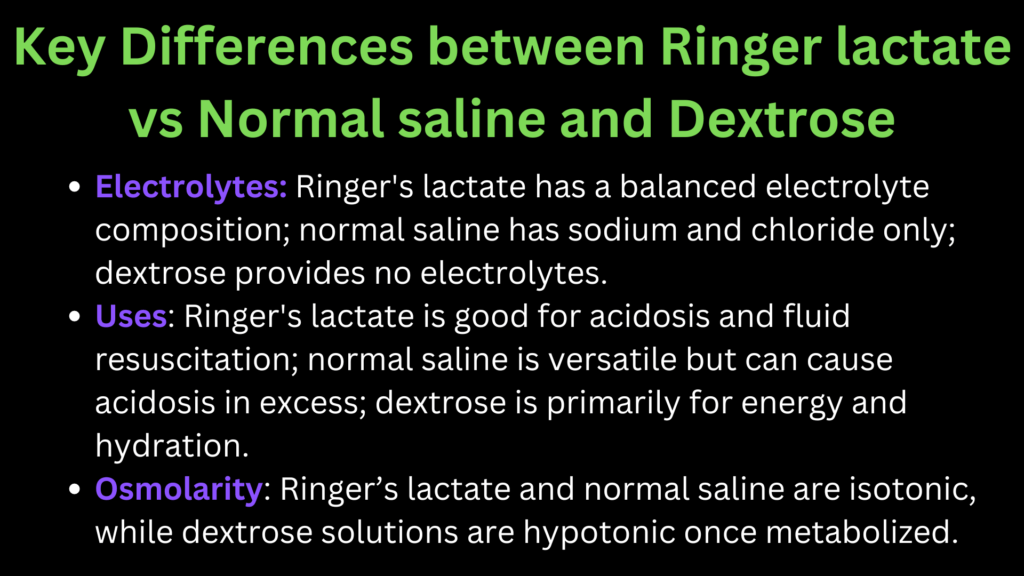Here’s a breakdown of the differences between Ringer’s lactate, normal saline, and dextrose solutions:
Ringer’s Lactate
- It contains sodium, potassium, calcium, and lactate. The lactate serves as a buffer.
- It Is isotonic, around 273 mOsm/L.
- It often used for fluid resuscitation, especially in cases of burns, trauma, or surgery. The lactate can help correct acidosis.
- Ringer Lactate Provides electrolytes, making it suitable for replacing lost fluids and maintaining electrolyte balance.
Normal Saline (0.9% NaCl)
- NS contains sodium and chloride.
- It Is isotonic, around 308 mOsm/L.
- Uses: Commonly used for fluid resuscitation, diluting medications, and as a carrier fluid. It can also help with dehydration.
- Normal saline Lacks potassium and other electrolytes, which can lead to hyperchloremic acidosis if used in large volumes.
Dextrose (e.g., D5W – 5% Dextrose in Water)
- Dextrose contains glucose (dextrose) dissolved in water.
- It Is hypotonic once metabolized, around 252 mOsm/L (D5W).
- It is used to provide calories, hydration, and to manage hypoglycemia. It can also be used in conjunction with other fluids.
- Dextrose did not has electrolytes, so it’s not suitable for replacing lost fluids without additional electrolyte solutions.

1 thought on “Ringer lactate vs Normal saline vs Dextrose”